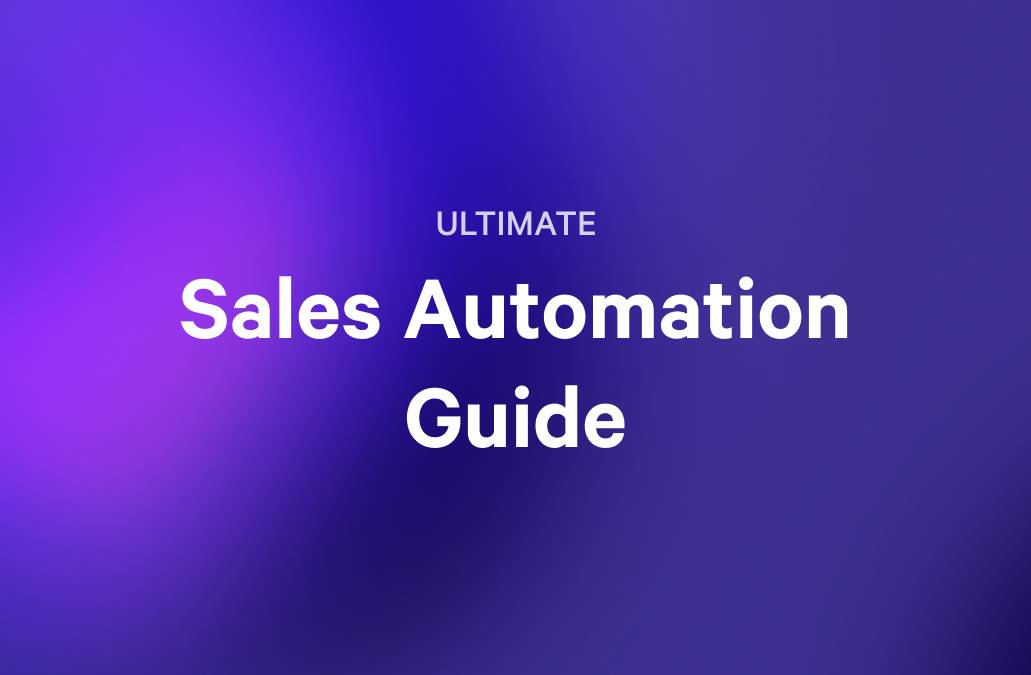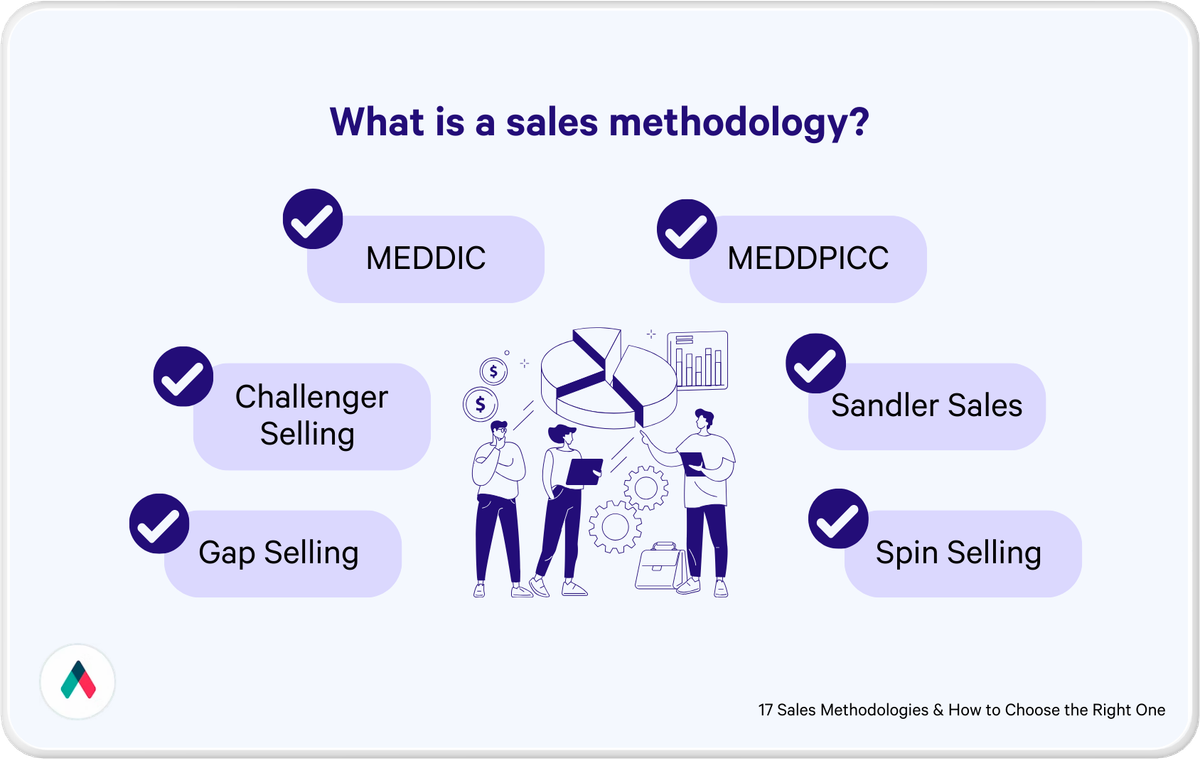Are you tired of feeling like your sales team is constantly hitting a brick wall when it comes to closing deals? Do you feel like your team members are doing everything possible but still not getting the desired results?
If so, you're not alone. Many B2B companies with sales teams of 20 or more employees struggle with closing deals, leaving them frustrated and wondering how to improve their sales process.
Enter multi-threaded sales. This technique has been gaining traction in the B2B world and for good reason. Multi-threaded sales is a way to increase your chances of closing deals by involving multiple people within a company in your b2b sales process.
By reaching out to and building relationships with multiple stakeholders, you can increase your chances of success and reduce the risk of a single point of failure.
In this article, we'll dive into the definition of multi-threaded sales, its benefits, and how to use it in your sales process. We'll also provide examples of how other companies have successfully implemented this technique.
By the end of this article, you'll have a better understanding of how multi-threaded sales can improve your sales process and increase your chances of success, regardless of the sales methodology used. So, let's get started.
What is sales multi threading?
Sales multi-threading is a sales technique that involves outreach and building relationships with multiple stakeholders within a company in order to increase the chances of closing a sales deal.
Rather than relying on a single point of contact, multi-threaded sales involves identifying and building relationships with c-suite decision-makers, influencers, and gatekeepers across different departments and levels within a company.
The goal of multi-threaded sales is to create a web of relationships within the target company, which can increase the likelihood of sales success and reduce the risk of a single point of failure.
By building relationships with multiple stakeholders, sales teams can gain a better understanding of the company's needs and pain points and tailor their sales pitch accordingly.
Multi-threaded sales also enable sales teams to maintain momentum even if their primary contact leaves the company or becomes unavailable. With multiple relationships established, the sales team can continue to engage with other stakeholders and keep the deal moving forward.
To effectively implement multi-threaded sales, it's important to identify key decision-makers, influencers, and gatekeepers within the target company and develop relationships with them over time.
This can involve reaching out through multiple channels, including phone, email, social media, and in-person meetings. By nurturing these relationships, sales representatives can increase their chances of closing deals and building long-term partnerships with their clients.
Examples of sales multi threading
One example of multi-threading in action is Salesforce, who used this technique to close a B2B deal with a large financial services company. Instead of relying on a single point of contact, Salesforce built relationships with multiple stakeholders within the company, including sales, marketing, IT, and finance departments.
By doing so, Salesforce was able to gain a better understanding of the company's needs and tailor their pitch accordingly, resulting in a successful deal.
Another example of multi-threading in action is HubSpot, who uses this technique to build relationships with various stakeholders within a company during their sales process.
HubSpot's sales team identifies and connects with decision-makers, end-users, and sales leaders across various departments to better understand the company's needs and pain points. This approach helps HubSpot establish themselves as a trusted partner and increases their chances of closing bigger deals.
Multi-threaded sales VS single-threaded sales
To better understand the benefits of multi-threaded sales, it's important to compare it with the traditional single-threaded sales approach.
Single-threaded sales rely on a single point of contact within a company, usually the decision-maker or a key influencer, to close a deal. While this approach can work, it also carries a higher risk of failure. If the single point of contact loses interest or leaves the company, the entire deal may fall apart, leaving the sales team back at square one.
On the other hand, multi-threaded sales involve building relationships with multiple stakeholders within a company. This approach reduces the risk of a single point of failure and increases the chances of success by involving multiple decision-makers and influencers. By building relationships with various stakeholders, sales teams can gain a better understanding of the company's needs and tailor their pitch accordingly.
In the future, single-threaded sales may become less effective as companies become more complex and decision-making processes become more distributed. By implementing a multi-threaded sales approach, companies can future-proof their sales process and increase their chances of success.
What are the benefits of multi-threaded sales?
The benefits of multi-threaded sales include:
- Reduced risk of failure.
- Increased chances of success.
- Better understanding of the client's needs.
- Establishing a trusted partnership.
By building relationships with multiple stakeholders, sales professionals can increase their chances of closing deals and future-proof their sales process.
1. Faster sales cycles
Multi-threaded sales can also lead to faster sales cycles. By building relationships with multiple stakeholders, sales teams can identify potential roadblocks early on in the sales process and address them proactively. This can help to reduce delays and accelerate the sales cycle.
For example, if the sales team is aware of a potential objection from a key decision-maker, they can work to address the objection before it becomes a roadblock. By doing so, they can keep the sales process moving forward and avoid delays.
2. Extra closed deals
One of the most significant benefits of multi-threaded sales is that it can lead to more closed sales deals. By building relationships with multiple stakeholders, sales teams can increase their chances of closing deals by addressing each stakeholder's unique needs and concerns.
For example, if a key decision-maker is focused on the financial benefits of a product or service, the sales team can tailor their pitch to highlight these benefits. If another stakeholder is more concerned with the technical specifications, the sales team can provide them with the necessary technical information.
3. Extra buyer data
Another benefit of multi-threaded sales is providing sales teams with valuable buyer data. By building relationships with multiple stakeholders, sales teams can better understand the client's needs, pain points, and decision-making process.
For example, by speaking with a key decision-maker, the sales team may gain insight into the company's long-term goals and priorities. By speaking with a technical expert, the sales team may gain insight into the company's current infrastructure and pain points.
By aggregating this data, sales teams can gain a holistic view of the client's needs and tailor their pitch accordingly to improve the overall buyer experience. This can lead to more effective communication and, ultimately, more closed deals. This buyer data can also be used to inform future sales strategies and refine the sales process.
How to implement a multi-threaded sales approach
To use multi-threaded sales, sales teams should identify key stakeholders within the client organization and build relationships with each stakeholder. Sales teams should tailor their communication to each stakeholder's unique needs and concerns, and keep them engaged throughout the sales process. Regular communication and follow-up are critical to maintaining these relationships.
Step #1 - #Identify key stakeholders
The first step in using multi-threaded sales is to identify the key stakeholders within the client organization, and Linkedin can be a great tool for this. Decision-makers, influencers, technical experts, and other stakeholders who may impact the decision-making process should all be identified.
Sales teams can use Linkedin to research the client organization and gain a better understanding of the decision-making process. They can also speak with current or past clients to identify additional stakeholders and leverage their existing relationships within the client organization.
Once key stakeholders have been identified, sales teams should prioritize them based on their level of influence and engagement in the decision-making process. This can help sales teams allocate their time and resources effectively and ensure they build relationships with the most critical stakeholders.
Step #2 - #Build relationships with stakeholders
Once key stakeholders have been identified, the next step in using multi-threaded sales is to build relationships with each stakeholder. Sales teams should tailor their communication to each stakeholder's unique needs and concerns and keep them engaged throughout the sales process.
To build relationships with stakeholders, sales teams should establish regular communication channels and follow up regularly. This can include phone calls, emails, or in-person sales meetings, depending on the stakeholder's preferences and availability.
Sales teams should build trust and rapport with each stakeholder by demonstrating their expertise and providing valuable insights and information. This can help to establish credibility and make stakeholders more receptive to the sales pitch.
Sales teams should also proactively address any concerns or objections that stakeholders may have and provide solutions or alternatives to address these concerns. This can help to build confidence and trust with stakeholders and increase the likelihood of closing the deal.
Step #3 - #Leverage stakeholder relationships
The third step in using multi-threaded sales is to leverage the relationships that have been built with stakeholders to advance the sales process. This can include identifying opportunities to cross-sell or upsell additional products or services or to introduce new stakeholders to the sales process.
Sales teams should also use their relationships with stakeholders to gather valuable insights and data to inform the sales strategy. This can include feedback on the sales pitch or objections that stakeholders may have raised, as well as information on the client's needs, preferences, and pain points.
By leveraging stakeholder relationships in this way, sales teams can gain a competitive advantage and increase their chances of success. This approach allows sales teams to be more strategic in their approach, focusing on building long-term relationships with clients rather than just closing a one-off sale.
Step #4 - #Collaborate with stakeholders
Collaboration with stakeholders is an important aspect of multi-threaded sales. By involving stakeholders in the sales process, sales teams can better understand the client's needs and preferences and identify opportunities for cross-selling and upselling.
To collaborate effectively with stakeholders, sales teams should establish clear lines of communication and ensure that all stakeholders are informed and engaged throughout the sales process. This can include regular meetings or check-ins to provide updates on progress and discuss any concerns or issues.
Sales teams should also be open to feedback and input from stakeholders and be willing to adapt their approach based on their feedback. This can help to build trust and rapport with stakeholders and increase their willingness to work with the sales team.
Step #5 - #Maintain relationships with stakeholders
Maintaining relationships with stakeholders is essential for the long-term success of multi-threaded sales. By nurturing these relationships, sales teams can increase customer loyalty and retention and identify opportunities for future sales and business growth.
To maintain stakeholder relationships, sales teams should continue to communicate regularly and provide ongoing support and value. This can include sharing relevant industry news or insights, offering training or education on new products or services, and delivering an exceptional buyer experience.
Sales reps should also proactively address any issues or concerns that stakeholders may have and be willing to go above and beyond to ensure their satisfaction. This can help to build trust and loyalty with stakeholders and increase the likelihood of repeat business.
You can see an example of this in our joint execution plan template.
FAQs
What is multi-threading in customer success?
Multi-threading in customer success refers to the process of building relationships with multiple stakeholders within a customer's organization, in order to increase engagement and drive long-term success.
How do you multi thread in enterprise sales?
To multi-thread in enterprise sales, salespeople should identify key stakeholders within a customer's organization, build relationships with these stakeholders, and leverage these relationships to collaborate and drive sales.
Take Action
Multi-threaded sales is a powerful approach that can help B2B organizations increase their sales and drive long-term success.
By identifying key stakeholders, building relationships, and leveraging those relationships to collaborate and close deals, sales teams can streamline their sales process and achieve better results.
The benefits of multi-threaded sales include faster sales cycles, more closed deals, and a wealth of valuable buyer data. By implementing this approach, companies can gain a competitive advantage and build strong relationships with their customers.
If you're interested in learning more about multi-threaded sales, we encourage you to check out Qwilr's Enterprise Sales Template, which can help you get started with this approach.
When you're ready to take your sales process to the next level, consider signing up for Qwilr to access a range of powerful tools and features designed to help you succeed.
About the author

Brendan Connaughton|Head of Growth Marketing
Brendan heads up growth marketing and demand generation at Qwilr, overseeing performance marketing, SEO, and lifecycle initiatives. Brendan has been instrumental in developing go-to-market functions for a number of high-growth startups and challenger brands.







